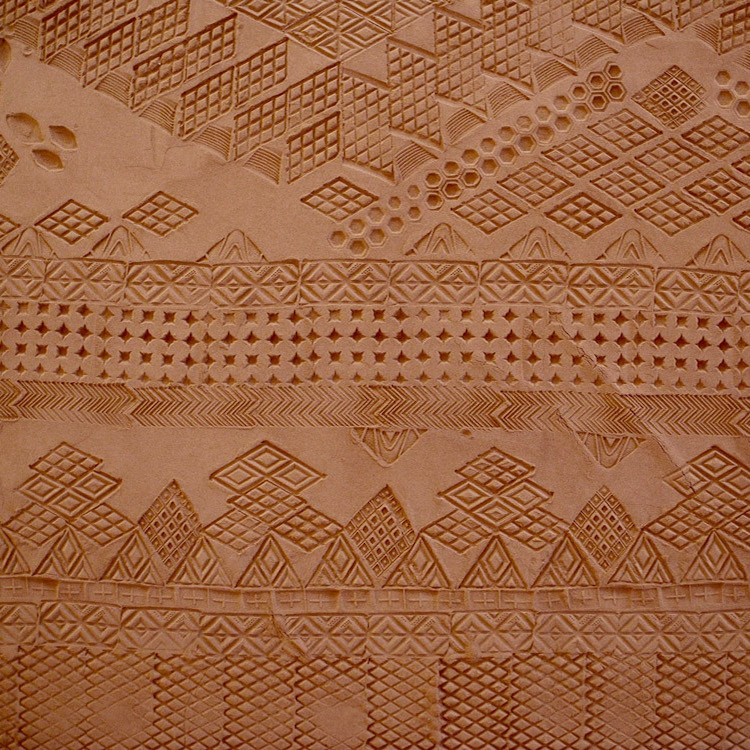OKLAHOMA CITY, Oklahoma — As ceramic artists turn their eyes toward working within the ephemerality of earth, Oklahoma City-based artist Rena Detrixhe grounds her artistic practice in elaborate installations from finely sifted dirt forming earthen rugs which investigate the relationship between art and environment.

Rena Detrixhe, Red Dirt Rug, 2016, Loose red Oklahoma soil, imprinted with modified shoe soles. Click for larger image

Rena Detrixhe, Red Dirt Rug (detail), 2016, Loose red Oklahoma soil, imprinted with modified shoe soles. Click for larger image
The dirt used in her work is collected by hand from the surrounding Oklahoma landscape bringing cultural and historical context to her earth-based textiles, the Detrixhe writes in her artist statement.
“This work embodies the complicated history of our relationship to nature, particularly in my current state of residence, Oklahoma, where human presence has deeply altered the landscape. This rich red earth is the land of the dust bowl, of the end of the trail of tears, of land runs and pipelines, of deep fault-lines and hydraulic fracturing. There is immense beauty and pride in this place and also profound sorrow.”
Detrixhe writes the meticulous process of refining and sifting through the soil following by stamping and imprinting her patterns is a “meditation on this past, a gesture of sensitivity, and the desire for understanding. “
“It is a meticulous and solitary act.”

Rena Detrixhe, Red Dirt Rug, 2017, Loose red Oklahoma soil, imprinted with modified shoe soles. 0.5 x 54 x 126 inches. Click for larger image

Rena Detrixhe, Red Dirt Rug, 2017, Loose red Oklahoma soil, imprinted with modified shoe soles. 0.5 x 54 x 126 inches. Click for larger image

Rena Detrixhe, Red Dirt Rug (detail) 2017, Loose red Oklahoma soil, imprinted with modified shoe soles. 0.5 x 54 x 126 inches. Click for larger image
Colossal writes through her employment of this fleeting form, Detrixhe questions the permanent decisions that have been made to the region’s environment. One of her red dirt rugs is currently a part of the group exhibition Shifting Landscapes at Form & Concept in Santa Fe, New Mexico (February 24 – May 20, 2017).
Check out this seriously cool time-lapse video of Detrixhe in action creating one of her earth rugs at Current Studio:
Rena Detrixhe is one of twelve artists selected for the inaugural year of the Tulsa Artist Fellowship in Tulsa, Oklahoma. She is currently in her second year of the fellowship.
Do you love or loathe this work from the worlds of contemporary ceramic art and contemporary ceramics? Share your thoughts in the comments.


Why doesn’t she cut it into pieces and fire it?
The artist is very interested in temporality and extreme fragility, much like the earth we walk upon.
Great and meaningful work! Besides it’s esthetic values it is it’s only possible existence in sitū, for a short while, that makes it so impressing